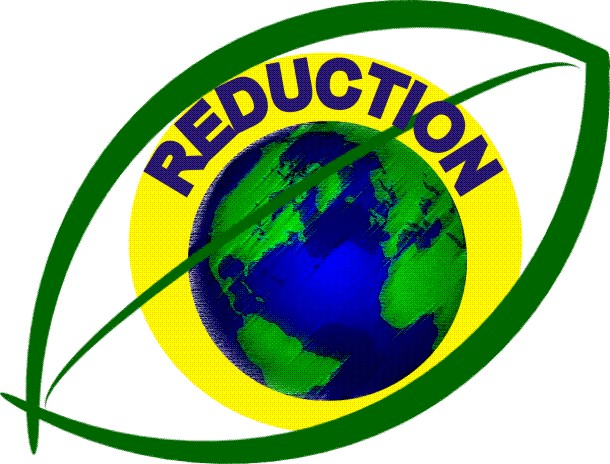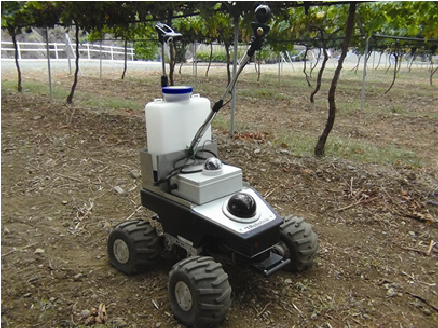Research & Development
Istognosis invests in R&D activities involving machine learning, image analysis, computer vision, robotics, intelligent systems and networks. Istognosis has been involved in several EU-funded and RPF-funded projects such as AgriRobot project (RPF, 2010-2013), REDUCTION project (FP7, 2011-2014), SAVSAR project (Bilateral Greece - Israel, 2014-2015), and BaSE project (Erasmus+, 2015-2016), Istognosis NAVARCHOS 2 project (RPF, 2018-2020), for the innovative enhancement of the existing NAVARCHOS platform owned by Istognosis.
Navarchos 2 Fleet Management Platform (RPF, 2018-2020)

NAVARCHOS2 project is co-funded by the “Research in Enterprises” action of the multi-annual development framework of Programmes RESTART 2016-2020 for the support of Research, Technological Development and Innovation in Cyprus (Grant Agreement No. ENTERPRISES/0916/0072) and spans on the period September 2018 - August 2020. Istognosis serves as the Host Organization in NAVARCHOS2 project. The NAVARCHOS2 project aims at the technological and innovation driven upgrade of Navarchos Fleet Management Systems so as to compete world-class related platforms that operate mainly on the cloud as a service and provide significant graphical information system capability and capacity as well as address the majority of operational and maintenance management requirements. The main features that will be designed and implemented in the frameworks of NAVARCHOS2 include: a) real-time driver-centric notification and recommendations algorithms for eco-driving behavior, b) intelligent metrics and analytics for empowering fleet managers to have a more comprehensive overview and complete control of their fleet, c) routing optimization and scheduling tools for increased fleet productivity, and d) scalable, highly available and high performance cloud-based infrastructure.
Within NAVARCHOS2, Istognosis undertakes the deployment of the Cloud-based scalable, highly available and high performance infrastructure, that safeguards the reliable operation of NAVARCHOS2 platform, benefiting from all attributes and services Cloud-based infrastructures offer including resource utilisation dynamicity, reduced failure risks, enhanced scalability and multi-tenancy. Moreover, Istognosis will develop a data collection gateway to receive data from vehicle tracking systems as well as retrieve data from open data providers (e.g. public transport data, weather data, traffic data etc.) that become available, and a complex event processing (CEP) pipeline capable of addressing the main challenges associated with the traditional CEP approaches, namely: latency in the processing which has become very critical, so that CEP tasks have to be parallelized (scalability is an issue), and complexity of the situations to be detected requires networks of CEP engines in order to process the real-time data. Finally, Istognosis will work towards the development of (a) the routing optimization and scheduling engine, offering remarkable cost savings due to routing optimization, reduced carbon footprint, timely delivery service, improved management control by linking the sales process with warehousing and transportation systems, improved information flow - everyone knows the status of orders at any time, improved reporting and supports strategic logistics network design; and (b) the historical vehicle tracking system data analytics incorporating algorithms for automatic region of interest (ROI) detection, driver proficiency metric in terms of optimal routing vs driver routing, driver routing and scheduling analysis, ROI analysis (i.e. to reveal unauthorized vehicle use), driver comparing and benchmarking including fleet utilization, performance metrics (fuel usage, idling activity, harsh acceleration/de-acceleration).
Within NAVARCHOS2, Istognosis undertakes the deployment of the Cloud-based scalable, highly available and high performance infrastructure, that safeguards the reliable operation of NAVARCHOS2 platform, benefiting from all attributes and services Cloud-based infrastructures offer including resource utilisation dynamicity, reduced failure risks, enhanced scalability and multi-tenancy. Moreover, Istognosis will develop a data collection gateway to receive data from vehicle tracking systems as well as retrieve data from open data providers (e.g. public transport data, weather data, traffic data etc.) that become available, and a complex event processing (CEP) pipeline capable of addressing the main challenges associated with the traditional CEP approaches, namely: latency in the processing which has become very critical, so that CEP tasks have to be parallelized (scalability is an issue), and complexity of the situations to be detected requires networks of CEP engines in order to process the real-time data. Finally, Istognosis will work towards the development of (a) the routing optimization and scheduling engine, offering remarkable cost savings due to routing optimization, reduced carbon footprint, timely delivery service, improved management control by linking the sales process with warehousing and transportation systems, improved information flow - everyone knows the status of orders at any time, improved reporting and supports strategic logistics network design; and (b) the historical vehicle tracking system data analytics incorporating algorithms for automatic region of interest (ROI) detection, driver proficiency metric in terms of optimal routing vs driver routing, driver routing and scheduling analysis, ROI analysis (i.e. to reveal unauthorized vehicle use), driver comparing and benchmarking including fleet utilization, performance metrics (fuel usage, idling activity, harsh acceleration/de-acceleration).
BaSE (Erasmus+, 2015-2016)

BaSE is an EU funded project under the Erasmus+ Programme with the main objective to offer innovative and alternative ways for entrepreneurial education. The main objective is to increase the potential of new business creation as well as provide adequate preparation for facing the hostile environment the financial crisis has created for existing businesses and those on their way.
SAVSAR: Semi-Autonomous Vineyard Spraying Agricultural Robot (Bilateral Greece - Israel, 2014 - 2015)

The SAVSAR project aims to contribute to the penetration of agricultural robots into commercial markets by further developing a teleoperated robot; which was implemented in a previous project (AgriRobot, see below). The main idea of this project is to combine the two existing directions (fully automated and teleoperated robot) in order to design; develop; test and evaluate a Semi-Autonomous Vineyard Spraying Agricultural Robot (SAVSAR). Istognosis was involved in the SAVSAR project as a hardware/software integrator. More specifically, Istognosis was in charge of developing ROS services and application for integrating web based UI with Agrirobot movement, vision, robot arm and spraying functionality. Furthermore, Istognosis was assigned to integrate different semi-autonomous navigation algorithms within the navigation system of Agrirobot.
REDUCTION: Reducing Environmental Footprint based on Multi-Modal Fleet management System for Eco-Routing and Driver Behaviour Adaptation (FP7, 2011-2014)

The REDUCTION project (http://www.reduction-project.eu/) focuses on advanced ICT solutions for managing multi-modal fleets and reducing their environmental footprint. REDUCTION collects historic and real-time data about driving behaviour, routing information, and emissions measurements, that are processed by advanced predictive analytics to enable fleets enhancing their current services as follows: 1) Optimizing driving behaviour: supporting effective decision making for the enhancement of drivers’ education and the formation of effective policies about optimal traffic operations (speeding, braking, etc.), based on the analytical results over the data that associate driving behaviour patterns with CO2 emissions. 2) Eco-routing: suggesting environmental-friendly routes and allowing multi-modal fleets to reduce their overall mileage automatically. 3) Support for multimodality: offering a transparent way to support multiple transportation modes and enabling comodality. REDUCTION follows an interdisciplinary approach and brings together expertise from several communities. Its innovative, decentralized architecture allows scalability to large fleets by combining both V2V and V2I approaches. Its planned commercial exploitation, based on its proposed cutting-edge technology, aims at providing a major breakthrough in the fast growing market of services for "green" fleets in EU and worldwide, and present substantial impact to the challenging environmental goals of EU. Istognosis was involved in the REDUCTION project, in the task of CAN Bus data transmission from buses to the cloud-based server and further in the definition of a novel algorithm for estimating the speed/acceleration/ deacceleration thresholds for achieving increased fuel efficiency.
AgriRobot: The supportive role of robotic technology for sustainable agriculture (RPF, 2010 - 2013)

The particular project exploited the interface between human and tele-operated agriculture robots and suggested methods in order the tele-operation of robots to agriculture to become more efficient and effective. More specifically an agricultural robot sprayer used, based on the Summit XL mobile platform by Robotnik. The Summit XL is a medium sized, high mobility all-terrain robot, with skid-steering kinematics based on four high power motorwheels. The tele-operator interactions and efficiency were study based on software able to monitor the operator’s direction and angle of view as well as movement. The operator was situated remotely from the field and used images from onboard cameras to teleoperate the robot in the vineyard in order to spray grape clusters. A number of interfaces were developed including alternative views of cameras and teleoperation functionality. In order to evaluate HRI awareness and in turn results in increased observed and perceived usability, compared to the single-view user interface. Istognosis was involved in the AgriRobot project as a hardware/software integrator. More specifically Istognosis developed ROS services and application for integrating web-based UI with Agrirobot movement, vision and spraying functionality.
